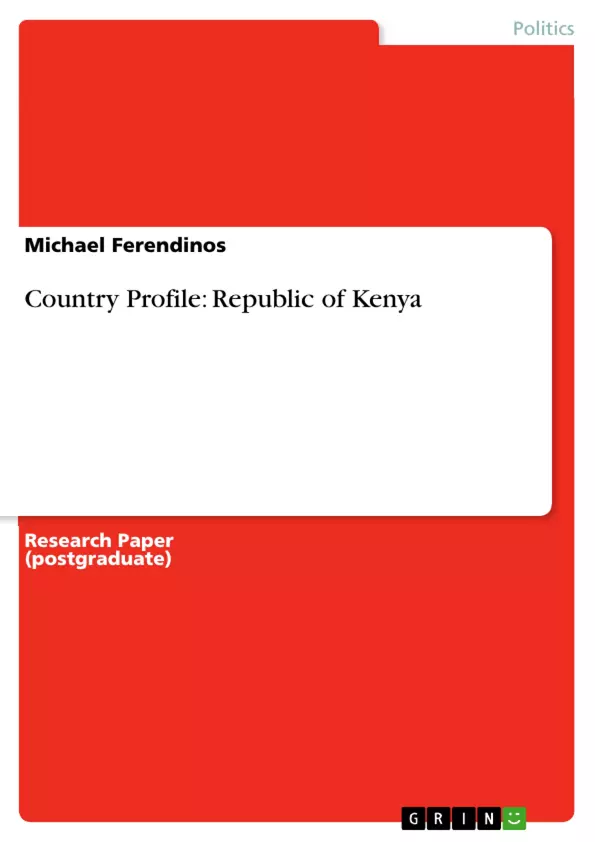Kenya can best be described as a shining light, perhaps even a success story, on a continent marred by poor economies and weak state structures. This paper will provide an analysis of the country on several fronts, namely the political system type; parliament and parties; elections and referendums; government and administration; federalism and local government; privatisation and development policies; and finally its role in regional organisations. Added to this will be a time series providing a historical overview of Kenyan politics.
[...]
Inhaltsverzeichnis (Table of Contents)
- Development of the political system type
- Parliaments and Parties
- Elections and Referendums
- Government and Administration
- Federalism and Local Government
- Privatization and Development Policies
- Kenya's role in regional organizations
Zielsetzung und Themenschwerpunkte (Objectives and Key Themes)
This paper analyzes Kenya's political system, focusing on its evolution, key institutions, and its role in regional organizations. The analysis spans various aspects including the development of the political system type, the functioning of parliament and parties, electoral processes, governmental administration, federalism and local governance, privatization and development policies, and Kenya's position within regional structures.
- Evolution of Kenya's political system from independence to multi-party democracy.
- The structure and function of Kenya's parliament and party system.
- Analysis of electoral processes and their impact on governance.
- Examination of government administration, federalism, and local governance.
- Assessment of privatization policies and their effects on development.
Zusammenfassung der Kapitel (Chapter Summaries)
Development of the political system type: This chapter traces the development of Kenya's political system from independence in 1963, highlighting the transition from a de facto one-party state under Kenyatta and Moi to a multi-party democracy following the 2002 elections. The chapter analyzes the role of key political figures and parties in shaping this evolution.
Parliaments and Parties: This section describes the structure and function of Kenya's parliament, including the roles of the president and the National Assembly. It examines the multi-party system, the evolution of the ruling party (NARC) and the rise of the Orange Democratic Movement (ODM) as the main opposition party.
Schlüsselwörter (Keywords)
Kenyan politics, political system, parliament, political parties, elections, multi-party democracy, one-party state, privatization, development policies, regional organizations, KANU, NARC, ODM.
- Arbeit zitieren
- M.A. Michael Ferendinos (Autor:in), 2007, Country Profile: Republic of Kenya, München, GRIN Verlag, https://www.grin.com/document/122888



